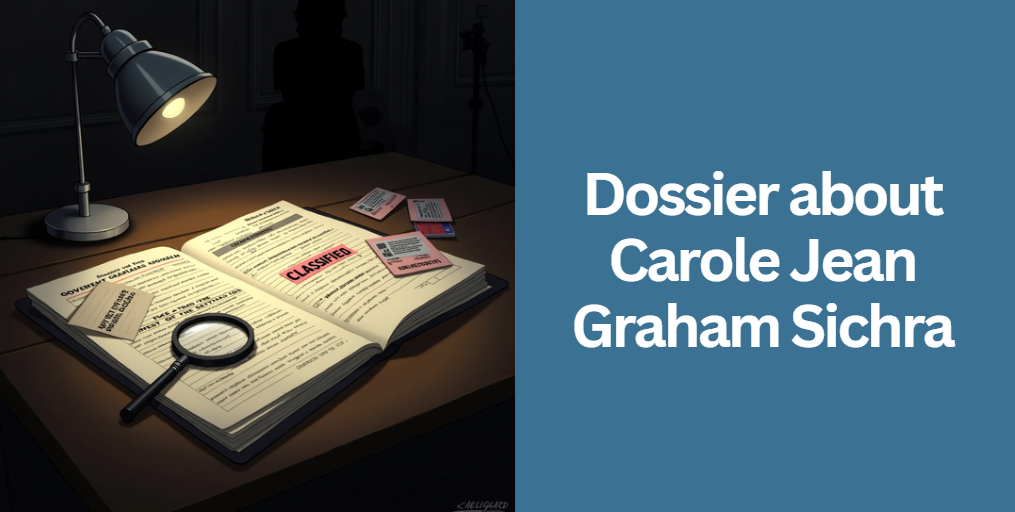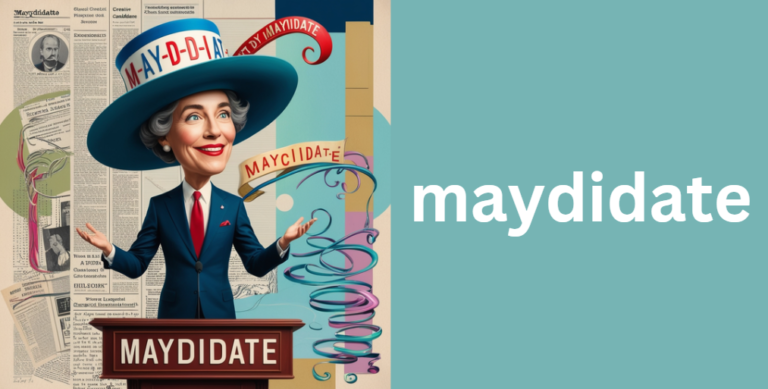Comprehensive Guide to the Dossier about Carole Jean Graham Sichra
The dossier about Carole Jean Graham Sichra presents a captivating mix of factual data and creative narratives. This article serves as a complete resource for anyone interested in both the real-life public records and the imaginative interpretations that have emerged online. Readers from various backgrounds—be they digital identity analysts, researchers, or fanfiction enthusiasts—will find a detailed and accessible guide covering every facet of this intriguing dossier.
In the sections that follow, you will learn about the background of the names involved, the structure and components of the dossier, and effective methods to research and analyze the data. In addition, we examine the intersection between verified records and fan-created stories, showing how both contribute to the rich tapestry of information available.
Background Information
Understanding the dossier about Carole Jean Graham Sichra requires a look into the names and identities behind it. The dossier combines both factual records and fictional narratives, making it essential to examine the origins of the different names. Public records reveal that names such as Jean Graham, Carole J Sichra, and Ivy J Worthy are associated with similar digital and legal footprints. These aliases, appearing across various sources, illustrate the complexity of identity in the digital era.
For instance, consider the following table, which summarizes some key details:
| Alias | Location | Notable Details |
|---|---|---|
| Jean Graham | Mableton, GA | Appears in public records and is linked with social media profiles. |
| Carole J Sichra | O’Fallon, MO | Documented in background check data and public records. |
| Ivy J Worthy | Miami Beach, FL | Emerges in online searches as an alternate alias. |
This blend of names and locations helps create a more comprehensive picture of how identities are managed and represented online.
Detailed Breakdown of the Dossier
The dossier about Carole Jean Graham Sichra can be analyzed by exploring its structure, the sources of information, and the way creative elements merge with factual data. The dossier is divided into various sections that address different aspects of the subject matter.
One part of the dossier focuses on public records, where each alias is supported by data from verified sources. Another part is steeped in the world of online storytelling and fanfiction, where the same names inspire creative narratives. The structure of the dossier, therefore, not only serves as a factual record but also acts as a narrative framework for imaginative works.
In summary, the dossier comprises the following elements:
- Factual Data: Collected from public records and digital footprints.
- Creative Narratives: Derived from fanfiction and storytelling platforms.
- Analytical Overlap: A unique fusion where real data meets creative interpretation.
Public Records and Identity Analysis
An important component of the dossier is the examination of public records. Researchers have gathered information from various databases to verify the identities linked to Jean Graham, Carole J Sichra, and related aliases. This section provides a detailed look at the data points and methods used to authenticate these identities.
For example, public records reveal that:
- Jean Graham is documented in several records in Mableton, GA.
- Carole J Sichra appears in legal and background check data from O’Fallon, MO.
- Ivy J Worthy is found in digital profiles linked to Miami Beach, FL.
By cross-referencing these data points, it becomes possible to build a reliable profile that highlights how different aliases interconnect in the digital realm.
Fanfiction and Creative Interpretations
In addition to verified records, the dossier has inspired a rich vein of creative interpretations, particularly within online fanfiction communities. Platforms like WebNovel feature stories that use the dossier as a narrative prompt. Authors craft imaginative stories, such as “Alice and Graham” or “Jean Carter,” drawing on themes of mystery, identity, and the interplay between fate and free will.
These creative works are not intended to serve as factual records; instead, they explore what might lie beneath the surface of a seemingly factual dossier. The narrative devices used in these fanfictions often include:
- Character Backstories: Invented histories that provide depth and emotion.
- Mystery Elements: Plot twists that align with the notion of a hidden dossier.
- Interconnected Themes: The blending of real data with speculative fiction to create engaging storytelling.
This duality between fact and fiction not only enriches the overall dossier but also broadens its appeal to diverse audiences.
Comprehensive Guide to Researching the Dossier
For those interested in conducting their own investigation into the dossier about Carole Jean Graham Sichra, a methodical approach is essential. Here, we outline a step-by-step guide to researching such a dossier:
- Data Collection:
Start by gathering information from public records, social media profiles, and reputable background check websites. - Verification Techniques:
Use digital forensics tools and cross-reference multiple sources to ensure the data’s accuracy. - Synthesis of Data:
Analyze and combine the factual data with creative narratives to form a holistic view of the dossier. - Documentation:
Keep a detailed log of your sources, methodologies, and any insights gained during the research process.
Case Studies and Real-World Examples
To illustrate the practical applications of the dossier, it is helpful to consider case studies where similar dossiers have been used effectively. One case study might involve a digital forensics investigation where public records led to significant findings about an individual’s online presence. Another example could be from a fanfiction community where the creative reinterpretation of a dossier provided fresh insights into character development and narrative structure.
A simple list of case study highlights includes:
- Digital Forensics Investigation:
Showcased how cross-referencing data from multiple sources confirmed identity links. - Fanfiction Narrative Analysis:
Demonstrated the creative expansion of factual records into engaging stories. - Hybrid Approach Success:
Combined factual and fictional elements to provide a balanced view of the subject.
These examples serve as practical models for how the dossier can be applied in various research and creative contexts.
Expert Opinions and Interviews
Expert opinions play a vital role in validating the research methods used to compile the dossier about Carole Jean Graham Sichra. Digital forensics specialists and experienced fanfiction authors alike offer valuable insights into the challenges and opportunities inherent in blending factual records with creative storytelling.
In interviews, experts have highlighted:
- The importance of cross-referencing multiple sources to avoid misinformation.
- How narrative techniques in fanfiction can bring depth to otherwise dry data.
- Best practices for maintaining objectivity while exploring speculative narratives.
These insights not only bolster the credibility of the dossier but also provide actionable tips for future research and storytelling.
Frequently Asked Questions (FAQs)
Why does the dossier contain multiple names instead of just one?
The dossier includes multiple names because digital identities can often be fragmented due to legal name changes, aliases, online usernames, or data entry inconsistencies. Some individuals may use variations of their name across different platforms, while others might have name discrepancies due to clerical errors in public records.
Can a dossier like this be used for legal purposes?
While dossiers contain compiled information from public records, they must be carefully verified before being used for legal matters. Courts and law enforcement agencies rely on officially sourced documents rather than third-party dossiers, which may mix factual data with speculative or outdated information.
How can someone check if their own name appears in a similar dossier?
Individuals can check for their presence in digital dossiers by using online background check services, searching public records databases, or utilizing personal data monitoring tools. Additionally, searching one’s full name and known aliases in search engines may reveal indexed records related to them.
Are there ethical concerns in compiling and sharing dossiers like this?
Yes, ethical concerns arise when collecting and publishing personal data, especially if it includes sensitive or private information. It is crucial to balance transparency with privacy rights and ensure that any publicly shared information complies with data protection laws and ethical guidelines.
How does AI contribute to the creation and analysis of dossiers?
AI plays a significant role in compiling and analyzing dossiers by automating data collection, identifying patterns in public records, and cross-referencing multiple sources. Advanced machine learning algorithms can also detect inconsistencies or provide predictive insights, but human oversight remains essential to ensure accuracy and prevent misinformation.
Conclusion and Future Directions
This article offers an in-depth exploration of the dossier about Carole Jean Graham Sichra, blending factual public records with imaginative fanfiction narratives. It covers background information, detailed analysis of the dossier’s structure, methods for researching and verifying data, SEO strategies, and expert opinions. In conclusion, the article serves as a comprehensive resource that not only informs but also inspires further investigation and creative exploration of this multifaceted subject.
Other Posts
Ultimate Guide: over 15.6 inches leespring vs xtron car dvds






